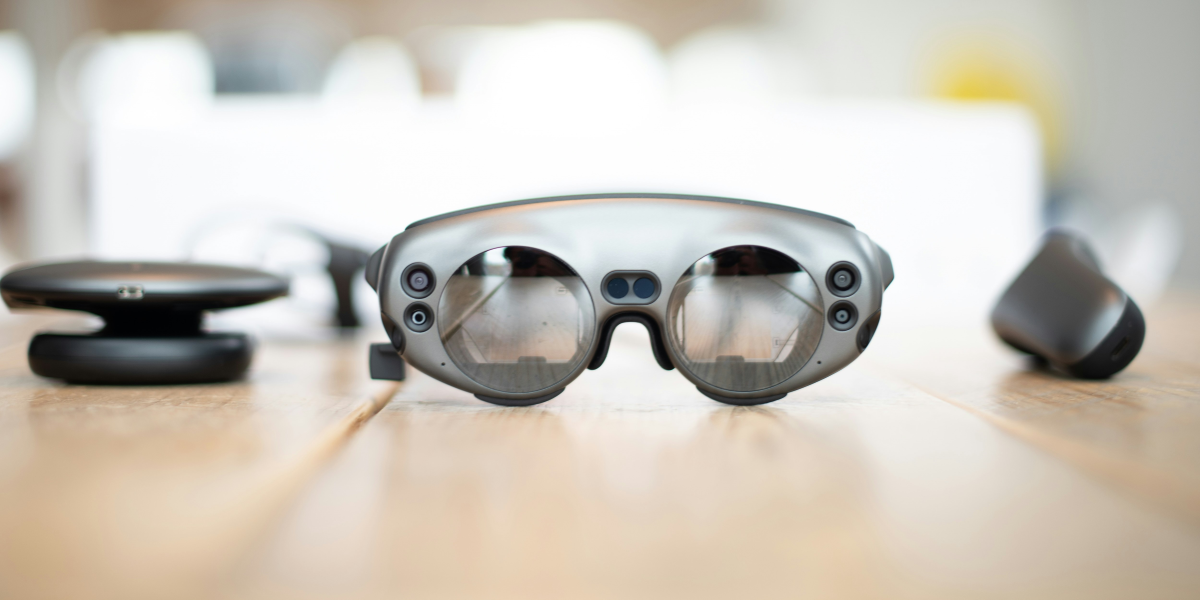Augmented Reality (AR) glasses rapidly transform businesses’ operations across various industries. These advanced devices combine the digital world with the physical, providing seamless interactions that improve efficiency, collaboration, and learning.
AR glasses offer businesses a forward-thinking solution to enhance productivity, streamline operations, and deliver a more immersive experience for employees and customers. With the continuous advancement of AR technology, businesses are starting to leverage these tools to stay ahead of the competition and meet the demands of an increasingly digital world.
Enhancing Operational Efficiency and Productivity
The introduction of AR glasses into business operations has the potential to significantly enhance productivity by providing workers with real-time data and visual overlays that improve decision-making and streamline workflow.
In manufacturing, logistics, and healthcare industries, workers are no longer constrained by the need to leave their tasks to access vital information. Instead, AR glasses allow employees to view instructions, reports, and other relevant data while keeping their hands free to focus on their work. This hands-free approach minimizes distractions and errors, which can otherwise occur during traditional multitasking.
For example, technicians can use AR glasses to display assembly instructions or repair guides directly in their vision field, guiding them through complex processes. This real-time guidance reduces errors and ensures a more accurate and efficient task completion.
Transforming Communication and Collaboration in Remote Work
As more businesses embrace remote and hybrid work models, AR glasses have become indispensable for enhancing collaboration and communication among teams across different locations. Traditional video conferencing has limitations, often making communication feel detached or disconnected. AR glasses, however, provide a more immersive experience by allowing team members to interact with virtual objects and data overlays in a shared space, even if they are miles apart.
For instance, employees can use AR glasses to virtually “meet” in a shared workspace, view presentations, or discuss designs in real time as if they were physically present. This creates a more engaging and productive meeting environment beyond traditional video calls’ flat nature.
Additionally, AR can enhance knowledge-sharing and brainstorming sessions by enabling participants to visualize ideas, manipulate 3D models, or interactively display data. By bridging the gap between virtual and physical environments, AR glasses foster collaboration without the need for travel, saving both time and money for businesses.
Revolutionizing Training and Employee Onboarding
Another significant advantage of AR glasses is their potential to transform training and onboarding processes. With AR technology, businesses can provide immersive, hands-on learning experiences that simulate real-world scenarios. New hires can train in a controlled, virtual environment that mirrors the tasks they will perform in their jobs, allowing them to practice and receive instant feedback without the risk of making costly mistakes.
AR glasses can also streamline the onboarding process for new employees by providing them with interactive guides that walk them through company policies, procedures, and workflows. These visual aids help employees get up to speed faster, ensuring a smoother transition into their roles.
Potential Challenges and Future Outlook
While AR glasses offer numerous benefits, the widespread adoption of this technology in business settings is not without its challenges. One of the primary obstacles is the cost of implementing AR solutions. The hardware and software needed to create and integrate AR applications can be expensive, especially for smaller businesses with limited budgets.
Moreover, businesses must also address concerns regarding the compatibility of AR glasses with existing systems. Integration with current workflows and technologies is crucial for ensuring that the implementation of AR solutions is seamless and efficient. Companies will need to invest in training and upskilling their workforce to maximize the potential of these tools. This will require time, resources, and a shift in organizational culture to embrace new working methods.
Another consideration is employee comfort and adaptation. While AR glasses offer an innovative way to interact with digital content, some employees may need help with them, especially during the initial stages of adoption. Businesses must ensure that employees are comfortable with the technology and that it enhances, rather than hinders, their productivity.
Despite these challenges, the future of AR glasses in business is promising. As technology continues to evolve and costs decrease, more industries are expected to adopt AR glasses to stay competitive. From improving operational efficiency to fostering better communication and revolutionizing employee training, AR glasses are poised to play a pivotal role in shaping the future of business operations.
Embracing the Future: The Impact of AR Glasses on Business Innovation
AR glasses are more than just a futuristic concept—they are a powerful tool already reshaping how businesses operate. AR glasses offer substantial benefits across various industries by improving efficiency, enhancing communication, and revolutionizing training.
While challenges remain, the potential for growth and innovation is undeniable. As businesses continue to explore the possibilities of AR, those that embrace this technology early will be well-positioned to thrive in an increasingly digital world. The future of business is here, and it’s augmented.
Published by: Khy Talara














